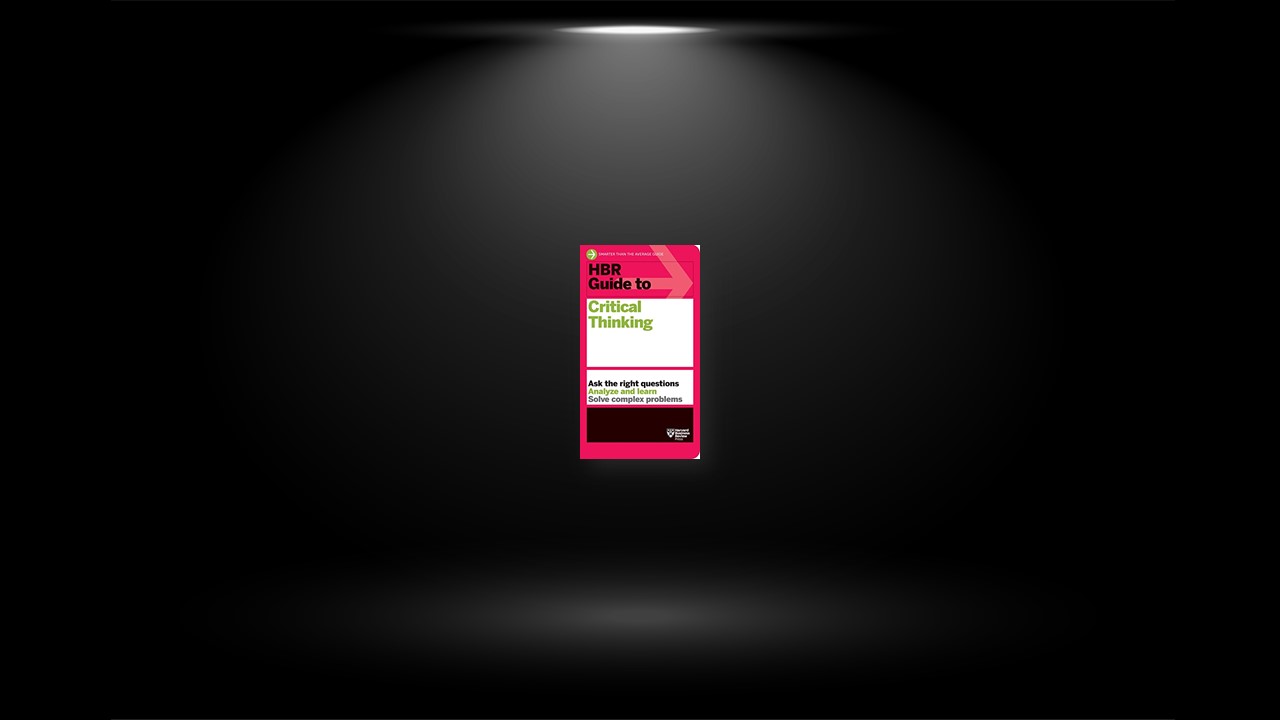Why do you think we lack critical thinking skills?
One of the reasons why it’s more difficult today is that we live in a world of incessant distraction, and technology is often to blame. When we have a question, we want instant gratification getting the information—just typing the question into Google and finding the answer quickly—so we don’t have as much time to stop and think.
Part of the necessity of critical thinking is having that ability to take a step back and think about your own thinking. It’s becoming more and more essential. As businesses and technology evolve, competitive environments change rapidly, and there’s more urgency to make decisions, that’s exactly when we need to do more critical thinking than we used to.
And getting better at critical thinking is something we can learn and cultivate?
Yes. The opposite of critical thinking is selective thinking. Naturally selective thinking is something that you can do relatively quickly because it’s just a reinforcement of your own opinion. People in business can get better at critical thinking if they just do three things: question assumptions, reason through logic, and diversify thought.
How do you do that?
Take a break—that doesn’t mean doing meditation or yoga, but just taking time. It could be going for a run or taking a walk around the block. That alone creates an opportunity for an individual to stop and think. So, that’s one dimension people need to put in their normal practice.
The second element is management of emotions—the times that you can imagine heated discussions or insults across the room, for instance. In that type of situation, it’s very difficult to engage in rational thinking. When it comes to truly important decisions, we need to put aside the feelings and emotions that go awry in a meeting setting.
And the third element is making sure that we have other points of view.
Act Like a Scientist
- Be a Knowledgeable Skeptic
When business leaders adopt this mindset, their biases and errors won’t get in the way of finding the truth. They will employ reason, demand evidence, and be open to new ideas. In scientific practice this means seeking independent confirmation of facts, placing more value on expertise than on authority, and examining competing hypotheses. Above all, skeptics question assumptions. They ask, “Why do we believe this?” or “What is the evidence that this is true?”
- Investigate Anomalies
In science the study of anomalies has been instrumental in identifying questionable assumptions. Anomalies are things that are unexpected, don’t look right, or seem strange, and they’re noticeable because they don’t cohere, or fit, with sought-after outcomes. Managers should watch for and explore them because they can lead to new business insights.
A famous anomaly, for example, led the scientist Louis Pasteur to make a major discovery while studying the causes of chicken cholera. In 1879, when he returned from a summer vacation, he realized that his cultures of chicken cholera had lost their virulence. He also noticed that when his assistant injected the spoiled cultures in hens, they developed only mild symptoms and fully recovered. When the same birds were injected with fresh, virulent bacteria, they remained healthy. His discovery—that weakened or dead microorganisms that produce mild disease can prevent that same disease in its lethal form—led to one of the biggest breakthroughs in fighting infectious diseases: live attenuated vaccines.
- Articulate Testable Hypotheses
To be effectively challenged, assumptions must be framed as hypotheses that can be quantifiably confirmed or disproved. “When you can measure what you are speaking about and express it in numbers, you know something about it,” said Lord Kelvin, a leading figure in 19th-century science and engineering. “But when you cannot measure it, when you cannot express it in numbers, your knowledge is of a meager and unsatisfactory kind.” An experiment that produces evidence contradicting a hypothesis allows us to recognize errors in our thinking and judgment, modify the hypothesis, and then retest it. This iterative process of testing and refining ultimately leads to stronger hypotheses.
- Produce Hard Evidence
Explaining the key to science in a lecture at Cornell University in 1964, the theoretical physicist Richard Feynman declared: “It doesn’t make any difference how beautiful your guess is. It doesn’t make any difference how smart you are, who made the guess, or what his name is. If it disagrees with experiment, it’s wrong. That’s all there is to it.” Senior business leaders should take that advice to heart. An endeavor’s underlying assumptions shouldn’t be based solely on the feelings, experiences, guesses, or status of those holding them. They should also stem from conclusive evidence. If such proof doesn’t already exist, disciplined experiments can provide it. This tenet should be a pillar of a company’s culture.
- Probe Cause and Effect
Relying on assumptions about cause and effect is dangerous for managers. We humans often see connections between unrelated actions and outcomes—confusing correlation with causation—and respond to irrelevant “noise” factors when making decisions. We also tend to happily accept “good” evidence that confirms our causal assumptions but challenge and investigate “bad” evidence that goes against them.
Scientists probe causality in different ways. In conventional experiments they change one or more variables (the presumed cause) and observe changes in the outcome (the effect) while holding all other variables constant. When they can’t keep all other variables constant, they rely on randomization, which prevents systemic bias, introduced consciously or unconsciously, from affecting the experiment. Randomization evenly spreads any remaining potential causes of the outcome between test and control groups.


